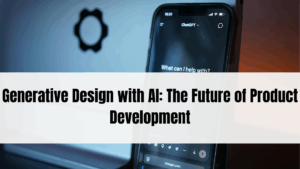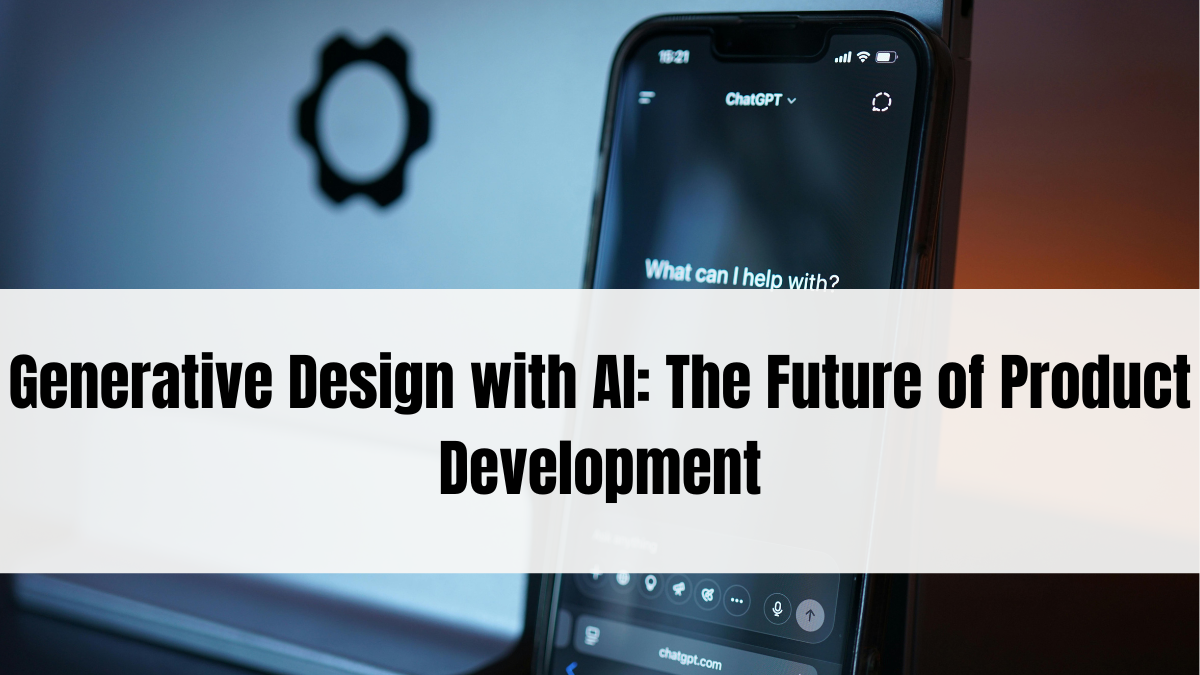Product development has undergone a radical transformation in recent years, and in 2025, AI in Product Design is no longer a futuristic concept—it’s the standard. With the help of generative algorithms, machine learning, and deep data analysis, AI is enabling engineers and designers to create products that are faster, lighter, more efficient, and more innovative than ever before.
This shift toward generative design is driving a new era of intelligent manufacturing—where products are designed by machines, optimized by data, and shaped by user-centric goals.

What Is Generative Design?
Generative design is a process where designers input constraints—such as size, material, weight, strength, and cost—and the AI system produces a wide range of design options. These designs are not just variations—they’re optimized structures derived from algorithms that simulate and evaluate thousands of possible iterations in real-time.
Key inputs include:
-
Performance requirements
-
Material constraints
-
Manufacturing methods
-
Cost ceilings
-
Weight and structural goals
Once provided, AI generates solutions that balance all these factors—often arriving at results that human designers may not have imagined.
Benefits of Using AI in Product Design
The impact of AI-driven generative design is both deep and wide across industries:
-
Speed: Drastically reduces prototyping and iteration cycles.
-
Innovation: Generates unique, non-intuitive designs.
-
Efficiency: Optimizes materials and structure for strength and cost.
-
Customization: Enables mass personalization of products.
-
Sustainability: Reduces waste by optimizing material usage.
In 2025, top companies are incorporating AI in Product Design to not just speed up development but to radically innovate their product lines.
Real-World Applications Across Industries
| Industry | AI Design Use Case | Example |
|---|---|---|
| Automotive | Lightweight car parts, aerodynamic shaping | General Motors, BMW |
| Aerospace | Strong yet light components, turbine design | Airbus, NASA |
| Architecture | Smart building layouts, stress-tested structures | Autodesk + Zaha Hadid Architects |
| Consumer Goods | Ergonomic product shells, interior component layout | Logitech, Procter & Gamble |
| Medical | Custom implants, prosthetics shaped to body scans | Johnson & Johnson, Medtronic |
This table shows how different sectors are integrating generative design to stay competitive, reduce costs, and enhance innovation.
Leading Tools for AI Product Design in 2025
-
Autodesk Fusion 360 (Generative Design Module)
Industry leader for manufacturing-grade designs with support for various materials. -
nTopology
Specializes in lattice structures, engineering simulations, and additive manufacturing. -
Siemens NX
Integrates simulation with generative workflows for large-scale industrial products. -
Altair Inspire
Popular for structural optimization and early-phase concept modeling. -
Dassault Systèmes SOLIDWORKS
Widely used for parametric and AI-assisted mechanical part design.
Each of these platforms enables teams to integrate AI workflows into existing engineering pipelines.
AI + Human Designers: The Ideal Collaboration
While AI can generate countless design variations, it doesn’t understand brand aesthetics, user emotion, or market trends. That’s where human designers step in—to curate, refine, and make the final decisions.
AI is not replacing the designer; it’s expanding their capability by:
-
Taking over time-consuming calculations
-
Offering faster access to viable concepts
-
Freeing up designers to focus on creativity and usability
-
Enhancing cross-functional collaboration (engineering, design, marketing)
In essence, AI in Product Design acts like a powerful co-pilot—handling complexity while the designer drives vision.
Challenges and Ethical Considerations
Despite its power, generative design does present challenges:
-
Intellectual Property: Who owns AI-generated designs?
-
Interpretability: Some AI-generated shapes are difficult to understand or explain.
-
Overdependence: Designers may lose touch with fundamentals if they rely too much on automation.
-
Manufacturing Compatibility: Not all AI designs are easy to fabricate with existing tools.
Ethical frameworks and engineering oversight are crucial in keeping the process balanced and safe.
FAQs
What is the main difference between generative design and traditional design?
Traditional design relies on human intuition and experience. Generative design uses AI to generate multiple iterations based on defined constraints and performance goals.
Which industries benefit most from AI in Product Design?
Industries like automotive, aerospace, healthcare, and consumer electronics are rapidly adopting generative design to reduce material usage and increase innovation speed.
Are AI-designed products already in the market?
Yes. Companies like BMW, Nike, and Airbus have used generative design in real-world products like car parts, sneakers, and aircraft components.
Is generative design only for large companies?
No. Tools like Autodesk Fusion 360 and Altair Inspire are accessible to startups, freelancers, and small design teams with scalable pricing.
Can AI design replace human creativity?
No. AI supports and enhances creativity but still requires human judgment, taste, and cultural understanding to make a product successful.
Click here to know more.
